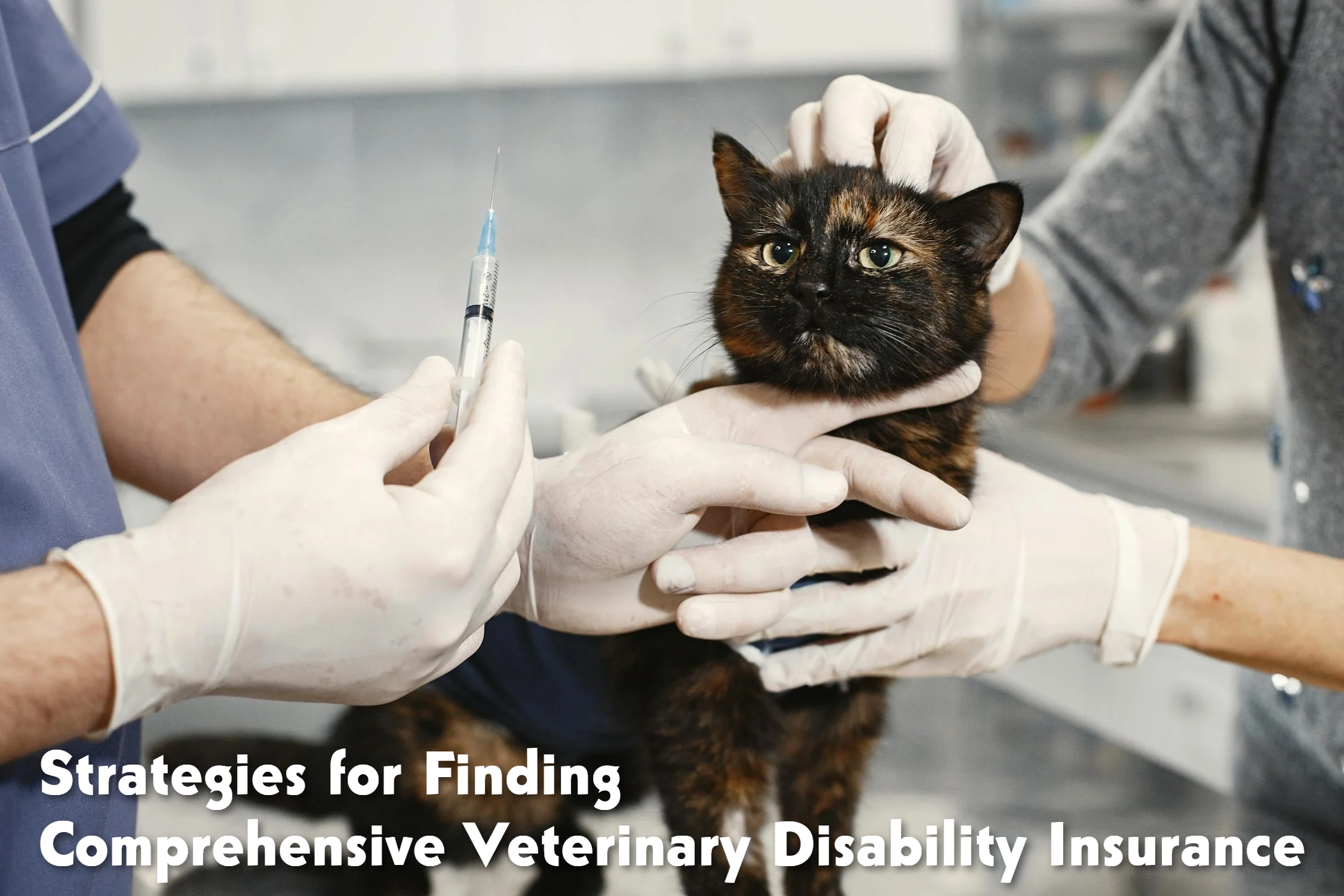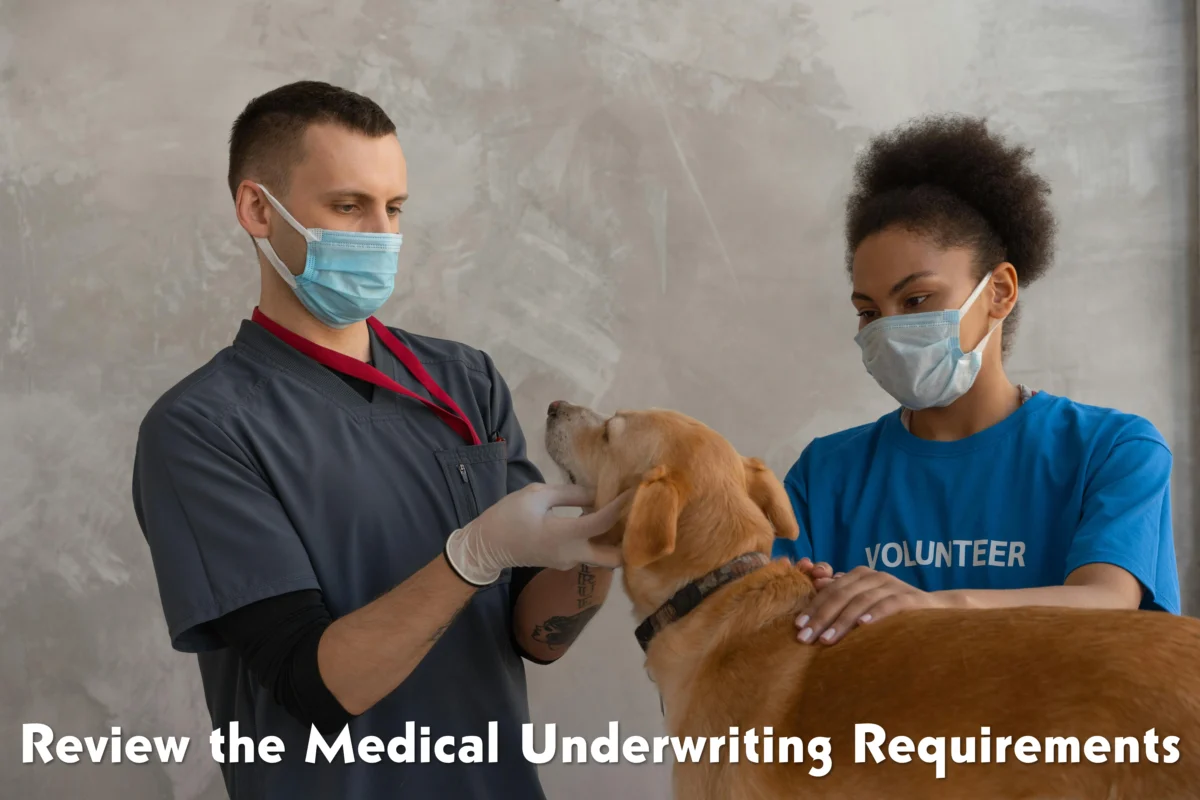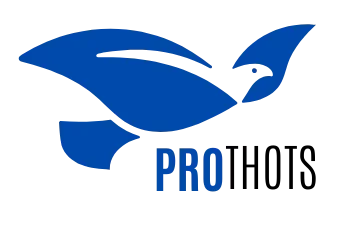Blog
Strategies for Finding Comprehensive Veterinary Disability Insurance

Veterinary professionals require insurance that addresses the physical and emotional practice-related risks. Disability insurance provides coverage if a condition, such as illness or injury, limits their ability to work. Here are some strategies for finding comprehensive disability insurance for veterinarians:
| Strategy | Focus |
|---|
| Coverage | Include total/partial, temp/permanent disability; add riders (residual, future increase, catastrophic). |
| Underwriting | Know health/job risks that affect approval and premiums. |
| Benefits & Timelines | Align benefit duration and waiting period with income needs. |
| Renewal Terms | Choose non-cancelable, upgradable plans that adapt to career shifts. |
| Benefit Coordination | Ensure benefits work with other insurances (health, workers’ comp). |
| Vet-Specific Plans | Pick insurers familiar with veterinary roles and risks. |
Assess the Extent of Coverage Provisions
A disability insurance policy should cover total and partial disability, temporary and permanent disability, and disability related to tasks performed at work. Insurance policies can also be customized to address specific risks a veterinarian might face. Some riders include:
- Residual disability: Residual disability riders pay a portion of your income when you can resume work, but not at full capacity. This helps limit income gaps that result from adjusted work hours or job type.
- Future increase: This rider allows you to increase your disability benefits without completing the medical underwriting process again. This makes sure that income is sufficient while the policy is active, even as the cost of living increases due to inflation.
- Catastrophic disability: Catastrophic disability riders are additional income benefits for severe disability. They meet more general lifestyle requirements, such as rent and utilities.
Select riders based on career progression and physical requirements of the job to enhance the stability of the policy. Understanding how the policy defines “own occupation” can help determine whether coverage is available when a veterinarian can no longer practice veterinary medicine but can work in another occupation. If a vet is unable to perform surgery but can do administrative tasks, the disability insurance may not apply. For clinical veterinarians who require specific training, a policy like this may be inadequate if financial assistance is revoked due to an occupation change.
Review the Medical Underwriting Requirements

Selecting the right disability insurance plan includes familiarizing yourself with the criteria underwriters use to determine eligibility. This can consist of an applicant’s health status, past injuries, chronic diseases, or high-risk lifestyle factors. Veterinarians who face high job risks, such as those who work with large animals, may have higher premiums than those who work with pets.
- Some carriers provide specific plans for medical professionals. This can speed up the approval process by streamlining underwriting steps tailored to the veterinary field.
- The transparency in health reporting and documentation helps improve the correlation between professional risk and the resulting coverage.
Evaluate Benefit Periods and Elimination Timelines
- Reviewing benefit periods and elimination timelines confirms that policy terms align with your income replacement requirements.
- The benefit period is the time that an insurer will continue to make payments after the claim has been processed.
- Some policies restrict benefit periods to a few years, while others are age-dependent. The waiting period, or the time before benefits are paid, also differs from one plan to another.
- This can affect income security. Choosing a policy with provisions tailored to veterinary practice interruptions offers more support in cases of long recovery or a gradual return to work.
Audit Renewal and Adjustment Terms
- The long-term stability of disability coverage depends on the policy’s renewal and premium adjustment provisions. The most secure policy types are usually non-cancelable and offer renewal options.
- In this case, the insurers cannot change the policy’s terms or raise rates based on changes in your health. Review whether the plan permits benefit upgrades or locks to confirm the coverage meets changing needs.
Veterinarians may change their career paths as they progress, transitioning from clinical practice to administration, research, or academic positions. These transitions should be supported by comprehensive disability insurance for veterinarians. The insurance should not exclude coverage due to changes in job description. Knowing how the policy addresses changes in job title, scope of duties, or location helps avoid gaps during transition.
Confirm Policy Coordination With Other Benefits
For veterinarians with other forms of insurance, like health or workers’ compensation, coordinating disability benefits helps prevent conflicts or overlaps. This makes sure that one policy does not negate the other but supports it. Some disability insurance policies have provisions that allow for a decrease in the amount of benefits paid depending on other income sources. Assessing how benefits are calculated in relation to other programs helps confirm that anticipated support remains intact when it is needed most.
Purchase Disability Insurance for Veterinarians
Purchasing veterinary disability insurance requires a combination of contract analysis, risk assessment, and policy selection. Each decision should be made with the particularities of the veterinary profession in mind, starting with the definition of the terms and ending with the coverage of the different stages of a career. If you want adequate coverage, work with providers that understand the specifics of the veterinary field.
